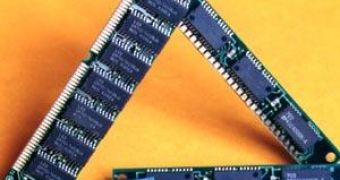The DRAM industry has been going through rough times, as the prices have been continuously dropping on the Taiwan market until a few days ago, and the competition has also become fiercer. As previously reported, DRAM makers face oversupply and lack of cash, which drives them into great losses. Some of them have already started to cut production, and plan cost control, which prove good solutions from pulling prices up and reviving some of the industry's players.
Even so, the problem will not cease to exist instantly and new ways of driving the market up must be found. Governments have already given a helping hand to the industry in an attempt to put it back on its feet, and have managed to give it a boost, yet there are some voices that suggest further such actions are needed, and that makers who have a better chance on the market should receive more support than others.
DRAM makers have tried to find ways of avoiding collapse through inking different partnerships like that between Powerchip Semiconductor Corporation (PSC) and Elpida, which allows the former to move from 70nm to 65nm process technology without having to upgrade its facilities, which puts the company in an advantageous position, while providing cost competitiveness.
Other firms, like Samsung and Hynix, are focused on migrating to 50nm, which would require equipment upgrades. Given this, the costs will be greater, even if the new technology allows the two makers to increase output from each wafer. Frank Huang, chairman of PSC, has said in an interview with Digitimes that the company's advantage over competitors extends to the fact that it can produce 1Gb DDR2 at cost of $1, while others can only produce 512Mb DDR2.
Huang has also revealed that Rexchip Electronics, a joint venture between PSC and Elpida, is currently placed in a better position than PSC. While Rexchip is expected to become the biggest DRAM production center in Taiwan, PSC will probably sell its Fab 3 (12-inch) to Rexchip. The three companies, PSC, Rexchip and Elpida, are expected to feature a total capacity of 300,000 wafers, which would allow them to compete with Hynix.
Other major players in the DRAM industry (not Taiwan based) have played the price cut card lately, driving Taiwan makers to lower output. Japanese brand vendors like Sony and Toshiba, along with other names such as Intel, Dell and HP, are said to be interested in the consolidation of the Taiwan DRAM market as to avoid monopoly in the segment.
According to Huang, an effective cost-control management would also be helpful for the makers, in addition to the help they expect to receive from the government and other industry players. The oversupply will continue to affect makers, and even those that go for the 50nm technology will be impacted, yet the situation is not a dead end, it seems. The entire interview can be found here.

 14 DAY TRIAL //
14 DAY TRIAL //